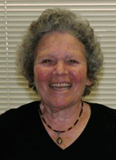Aug 14 2008
Invited and Keynote Speakers
Invited Speaker: Dmitri Tymoczko

Associate Professor of Music, Princeton University
The Geometry of Consonance
Abstract
In my talk, I will describe five properties that help make music sound tonal — or “good,” to most listeners. I will then show that combining these properties is mathematically non-trivial, with the consequence that space of possible tonal musics is severely constrained. This leads me to construct higher-dimensional geometrical representations of musical structure, in which it is clear how the various properties can be combined. Finally, I will show that Western music combines these five properties at two different temporal levels: the immediate level of the chord, and the long-term level of the scale. The resulting music is hierarchically self-similar, exploiting the same basic procedures on two different time scales. In fact, one and the same twisted cubic lattice describes the musical relationships among common chords and scales.
Biography
Dmitri Tymoczko is a composer and music theorist who is an Associate Professor at Princeton University. He studied music and philosophy at Harvard University, where his primary teachers were Milton Babbitt, Leon Kirchner, Bernard Rands, Stanley Cavell, and Hilary Putnam. In 1992 he received a Rhodes Scholarship to do graduate work in philosophy at Oxford University. He received a Ph. D. in music composition from the University of California, Berkeley, where his teachers included Jorge Liderman, Olly Wilson, David Milnes, Steve Coleman, Richard Taruskin, and Edmund Campion.
Dmitri’s music has won numerous prizes and awards, including a Guggenheim fellowship, a Charles Ives Scholarship from the American Academy of Arts and Letters, two Hugh F. MacColl Prizes from Harvard University, and the Eisner and DeLorenzo prizes from the University of California, Berkeley. He has received fellowships from Tanglewood, the Ernest Bloch festival, the Mannes Institute for Advanced Studies in Music Theory, and has been the composer in residence at the Radcliffe Institute for Advanced Study, and was awarded the Arthur Scribner Bicentennial Preceptorship from Princeton University. His music has been performed and by the Brentano Quartet, the Pacifica Quartet, Ursula Oppens, the Network for New Music, the Synergy Vocal Ensemble, the Gregg Smith Singers, the Janus Trio, the Cleveland Contemporary Youth Orchestra, the San Francisco Contemporary Players, and others. He is currently writing a book for Oxford University Press about what makes music sound good.
Keynote Speaker: Jeanne Bamberger

Professor of Music and Urban Education, MIT emerita
Visiting Professor, UC-Berkeley School of Education
Human Music Retrieval: Noting Time
Abstract
“The unhappy fate of music…to fade away as soon as it is born.”
• Leonardo Da Vinci
“The notes don’t seem to go with what I’m hearing.”
• Paul McCartney
These two quotes are a prompt for further inquiry: Why does music notation, the common conduit for human music retrieval, often become problematic, even irrelevant, even for those who may be identified as “gifted?” I will argue that the problem arises because we do not distinguish between our familiar units of description, the notes shown in a score, and the intuitive, contextual units of perception that we attend to in making sense of the music all around us.
Notations transform the continuousness of music as it disappears in time, into symbols that refer consistently to events as stable, measurable, properties disengaged from context and function. Notational systems bring with them much more than pitches and rhythms: ”…they transmit a whole way of thinking about music” How can we respond to the utility of notational invariance while still being responsive and responsible to the unique context and function of events as they unfold in the passing present?
I will follow a group of 10 year old children as they transform their action knowledge, seamlessly guiding their hearing and playing, into noted “things” that hold still to be looked at and upon which to reflect: What’s a “thing?”
“A thing as grasped is itself abstracted from any context. A thing endures for us, temporally, by virtue of abstraction from changes-of-context.”
• John Rahn
Biography
Jeanne Bamberger is Professor of Music emerita at the Massachusetts Institute of Technology where she teaches music theory and music cognition. She is also currently Visiting Professor of Education at UC-Berkeley. Her research is interdisciplinary: integrating music theory and practice, modes of representation, and recent approaches to cognitive development, she focuses on close analysis of children and adults in moments of spontaneous learning. Professor Bamberger, was a student of Artur Schnabel and Roger Sessions, performed extensively in the US and Europe as piano soloist and in chamber music ensembles. She attended Columbia University and the University of California at Berkeley receiving degrees in philosophy and music theory. Her most recent books include The mind behind the musical ear, and Developing musical intuitions: A project based introduction to making and understanding music.
